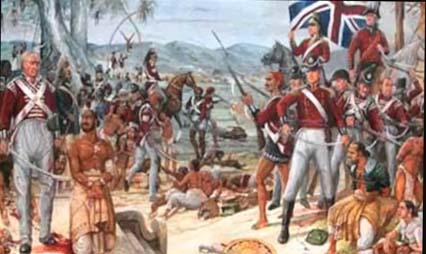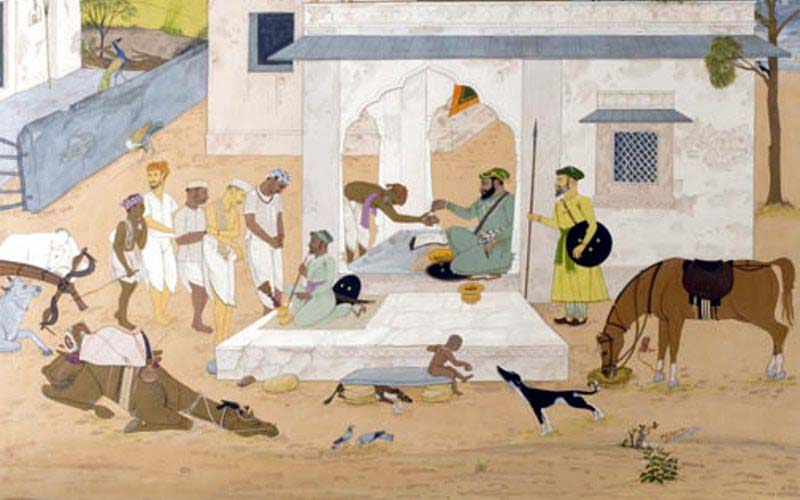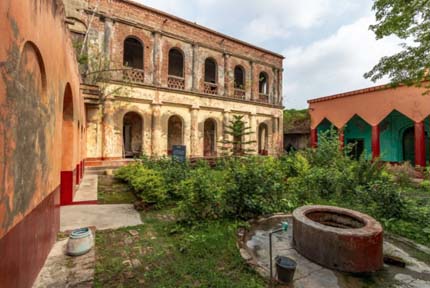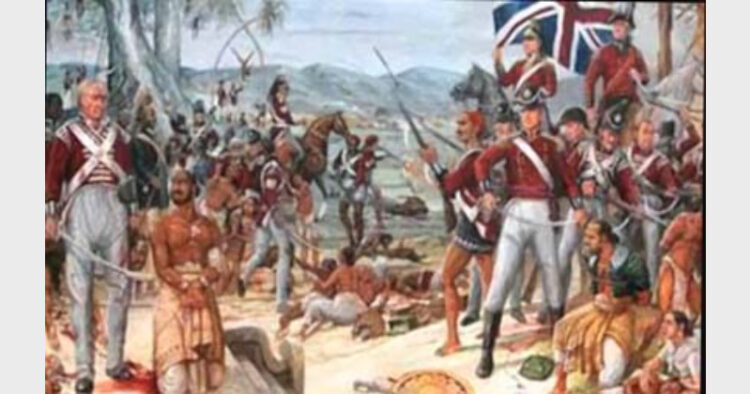-Agrah Pandit

“An opulent city lay at my mercy; its richest bankers bid against each other for my smiles; I walked through vaults which were thrown open to me alone, piled on either hand with gold and jewels…”— Robert Clive.
An advisory committee to the Dutch government, this month, recommended that the Netherlands should return “looted” artefacts to its former colonies (Sri Lanka, Indonesia, etc.). The Committee arrived at its conclusion after discussion with the citizens of countries it once colonised. The Netherlands’ museums have backed the recommendations in the name of “recognition and rectification of these injustices”. The move has large political backing as well despite the absence of a requirement of retroactive effect in any of the international conventions on looted heritage. The Netherlands has approached the issue as an ethical question. The Committee even went on to recommend to consider requests for the return of cultural objects in possession of the Dutch State from source countries colonized by other European powers. The underlying principle is: what was stolen must be returned, thereby redressing the injustice.
Other countries in Europe too have discussed the option of proactively restituting the looted artefacts. French President Emmanuel Macron in 2017 promised to put in place the conditions to facilitate the restitution of African cultural heritage to Africa. It has since resulted in the reimbursement of 1 object back to Senegal, a former French Colony while repayment of the 27 other items is a work-in-progress as on date. Sadly though for India, Britain has shown reluctance to such a move so far. Incidentally, the word “loot” comes from Sanskrit. The loot by British was so great that their behaviour has come to symbolise all such acts of heritage plunder.
The Grand Loot of India
The British economic historian Angus Maddison has demonstrated that India’s share of the world economy was 32.5% of world’s GDP, more than all of Europe, all former USSR countries, USA and all Latin America put together at the start of Christian era. It was 28% on the eve of invasion by Mahmud Ghazni. A further series of Islamic invasion and loot ensured that by 1700, it came down to 24% which was still on par with all of Europe put together. By the time the British left, India’s share in world GDP had declined to a miserable 4%. The journey from 32.5% to 4% is not a mere matter of statistics but of untold suffering, and as is this article’s focus, of heritage loot.
It is said that Nadir Shah looted Delhi so much that all taxes were eliminated in his home country Persia for the next three years. He looted Peacock throne, Koh-i-Noor diamond and emptied all gems, diamonds and jewellery of the imperial treasury. The dastardly loot of Ghazni and Muhammad Gouri, etc. too are well-chronicled. Moreover, many Indian kings too competed with foreigners in this drain of wealth and heritage out of India. Aurangzeb, for instance, drained the wealth of no less than 70 lakhs (a huge sum that time) to Muslim countries and Muslim holy sites in the course of 7 years alone. M. A. Khan in Islamic Jihad: A Legacy of Forced Conversion, Imperialism and Slavery writes thus: “…the money and resources, extracted from the sweat and toil of non-Muslim subjects of India, used to be siphoned to the treasuries of the Islamic Caliphate in Damascus, Baghdad, Cairo or Tashkent, to the Islamic holy cities of Mecca and Medina, and to the pockets of the Muslim holy men throughout the Islamic world. At the same time, the infidels of India were being reduced to awful misery.”

Heritage Loot during the British Raj
“What is England now? A sink of Indian wealth.”— Horace Walpole, 18th century.
The medieval India which the British conquered was still a ‘sone ki chidiya’ despite the centuries of plunder earlier. The ingenuity and sweat of Indians ensured that India was the industrial hub of the world. Sample these words by J. T. Sunderland, British-born American Minister: “Nearly every kind of manufacture or product known to the civilized world—nearly every kind of creation of man’s brain and hand, existing anywhere, and prized either for its utility or beauty—had long been produced in India. India was a far greater industrial and manufacturing nation than any in Europe or any other in Asia. Her textile goods were famous over the civilized world, so were her exquisite jewellery and her precious stones cut in every lovely form; so were her pottery, porcelains, ceramics of every kind, quality, colour and beautiful shape; so were her fine works in metal—iron, steel, silver and gold. She had great architecture—equal in beauty to any in the world. She had great engineering skills. She had great merchants, great businessmen, great bankers and financiers. Not only was she the greatest shipbuilding nation, but she had great commerce and trade by land and sea, which extended to all known civilized countries. Such was the India which the British found when they came.”
“There are few kings in Europe richer than the Directors of the English East India Company”— French ambassador to London.
Thomas Pitt, the governor of Madras, acquired—either stole from the eye socket of a temple deity or got it smuggled via a poor miner— a diamond which is said to be the most beautiful jewel in the world. A secure Pitts soon gave up his governorship and bought for himself a seat in British Parliament. 15 years later, Pitt would sell this diamond to a Regent of France for £ 1,35,000. This handsome money will go in financing the generation of Pitts in becoming Prime Ministers of Britain— his grandson William Pitt and his great-grandson William Pitt, the Younger. The diamond today is on display in Louvre (France) and is considered the purest diamond in the world. Similarly, the juvenile Sikh ruler Maharaja Duleep Singh was forced to hand over to the British Koh-i-Noor, once the world’s largest diamond, weighing 793 carats. Similar is the fate of other desi diamonds, e.g. the blue Hope in US’ possession today; the pink Daria-i-Noor now in Iran; the Dresden Green now in Germany; Orlov in Russia, Nassau diamond in the US, etc. Most of them passed from Hindu dynasties like the Kakatiyas to Muslim rulers and then to the British raj.
Another curious case is of Amaravati stupa which was recklessly and continuously dismembered over time and now features in museums of France, Singapore, United States and of course the United Kingdom (“Amravati Gallery” in British Museum). A complete metal Buddha statue known as Sultanganj Buddha found itself in Birmingham museum and is today known as Birmingham Buddha. Other prominent plundered items are the Golden Throne of Maharaja Ranjit Singh, the royal jade wine cup of Shahjahan, Vag Devi Saraswati idol, etc. The perverted pretext for the loot was to preserve the heritage, not in situ (on-site) but off-site, thus contradicting the recognized principle of preservation. Innumerable Chola bronze works, miniature paintings, exotic Indian artworks, literature and other artefacts were stolen or looted in India and then subsequently sold at an exorbitant price back in England.
British museums are virtually replete with the plundered items of Indian heritage. When asked to return Kohinoor to India, the former Prime Minister David Cameron replied, “If you say yes to one, you would suddenly find the British Museum would be empty. I’m afraid to say it [Kohinoor] is going to have to stay put”. It was the frank acceptance that British museums are nothing but a collection of the misappropriated Indian heritage—the looted articles of heritage run in at least 5 figures, if not 6.
The Ongoing Loot
We will be naïve if we think that the civilisational loot has stopped with the departure of the British. In fact, India is the hot spot of heritage looting, illegal digging, site plunder and temple theft. According to UNESCO, till 1989 alone, and estimated 50,000 antiques were stolen. Every decade, thousands of cultural properties worth thousands of crores get stolen from India. Besides looting from the sites of the protected historical monument, where artefacts are at least documented, there is industrial-level loot from around 5 lakhs unprotected sites of monuments! Out of an estimated 7 million antiquities, only 1.3 million are documented. Worse, India neither leverages Interpol’s vast database of stolen heritage objects to track heritage crimes nor it adds to this database the known cases of antiques stealing. The Archaeological Survey of India never participates or collects data on Indian antiquities put on sale by Sotheby’s and Christie’s (CAG report, 2013). Add to that, the poor conviction rate in such cases and big fish not caught. One of the few big fish saw includes Subhas Kapoor from whose possession was confiscated 2622 items worth $107.6 million—that too by the US authorities. The restitution of confiscated items to India, however, is bound to suffer from the lack of documentation—if you do not have documents, how would you prove ownership? Back in India, such a large-scale confiscation is unthinkable because, except the Idol Wing of Tamil Nadu, there is not even a dedicated monument preservation task force in other states.
In-situ and open-air sites are particularly vulnerable. Thanks to our apathy and lack of policing, we are on the verge of losing Bhot Bagan Math in Howrah, the first Tibetan monastery in plains of India; the entire site of Garh Panchakot, the medieval city under Manbhum; Chandraketugarh, one of the early pre-historic urban coastal areas. Even the cases of theft from museums are aplenty. 157 rare items were stolen from the heavily-guarded National Museum in New Delhi in 1968. 1750 miniature paintings were once stolen from Jaipur Palace Museum.

Way Forward
This is high time when heritage crimes stop and India makes a case for its looted heritage to be restituted. The context is being proactively set by European countries like France and the Netherlands. Britain’s reluctance can be countered by the international opinion as well as India—the biggest victim of heritage theft— making its case eloquently. The Dutch committee’s recommendations can come handy in this regard as it starts with the observation that the first step in developing a policy on dealing with colonial collections is the recognition that an injustice was done to the natives of former colonial territories when cultural objects were taken against their will. The second step is expressing readiness to rectify this historical injustice. The terms like “recognition” and “readiness to rectify” clearly indicate to an ethical imperative behind such a move. The report itself beautifully explains the rationale for the restitution: “to fall under the spell of an object, to be touched by it, moved emotionally by a piece of art in a museum, brought to tears of joy, to admire its forms of ingenuity, to like the artworks’ colours, to take a photo of it, to let oneself be transformed by it: all these experiences — which are also forms of access to knowledge — cannot simply be reserved to the inheritors of an asymmetrical history, to the benefactors of an excess of privilege and mobility.”
The report offers another goldmine of suggestions: the heritage return can be effected proactively to source countries suffering an involuntary loss of possession. Even where provenance history of objects cannot be fully determined or where it does not indicate involuntary loss of possession, the appeal for restitution can still be entertained where cultural heritage objects are of cultural, historical or religious importance for victim countries. It further recommends investing in the exchange of knowledge, ideas and views between erstwhile imperialist countries and their former colonies, possibly through UNESCO.
UNESCO and Interpol can be instrumental in such international restitution as well as prevention of heritage crimes. Giving back to countries what’s theirs will be one more step towards decolonisation.
Seeking international agreement, esp. of Britain should be one leg of our strategy, the other leg being setting our house in order. Fast-tracking documentation of each and every artefact must be undertaken in priority. More unprotected sites must come under the preservation policing. Sensitizing the locals better be an agenda. One national enforcement wing for cultural preservation is a must. India, as a big stakeholder in stopping heritage loot, should also push for international cooperation in preventing heritage crimes anywhere in the world.
Conclusion
Heritage loss results in the loss of cultural identity as well as of socioeconomic complexity. This cultural carnage may lead to the falling of moral standards and the rise of violence in society. A collapsed culture carries the possibility of reverting to a more primitive state of being absorbed into a healthier society. An example would be Afghanistan and Pakistan, which once were expansive theatres of a superior culture, art and ancient civilization. The gradual loss of heritage and heritage memory, aided by the State, has resulted in history books of Pakistan starting from 7th century onwards. Just contrast their present State with a much more advanced ancient civilization (Indus Valley Civilization). Pakistan’s and Afghanistan’s are a cautionary tale of the risk in forgetting our roots and history that accompanies the loss of tangible heritage. The plundering of heritage is the plundering of the past. Looting of heritage is depriving humanity of history.














Comments